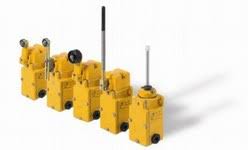Misalignment Switches
Misalignment switches, also known as misalignment detectors or misalignment sensors, are safety devices used in conveyor systems to detect and monitor the misalignment of conveyor belts. When the conveyor belt deviates from its correct path, these switches trigger an alarm or stop the conveyor to prevent potential damage and hazards. There are different types of misalignment switches, including:
1. Belt Edge Misalignment Switch: This type of misalignment switch is installed at the edge of the conveyor belt and activates when the belt moves too far to either side, indicating misalignment.
2. Belt Center Misalignment Switch: Center misalignment switches are placed in the middle of the conveyor belt and trigger when the belt deviates from the centerline, indicating a misalignment condition.
3. Roller Misalignment Switch: Roller misalignment switches monitor the alignment of conveyor rollers. When a roller becomes misaligned, the switch is activated to signal the issue.
4. Wire Rope Misalignment Switch: This type of switch uses a wire rope that runs parallel to the conveyor belt. When the belt moves away from its centerline, it causes tension on the wire rope, triggering the switch.
5. Tilt Switch: Tilt switches are installed on the conveyor frame and trigger when the conveyor belt tilts beyond a specified angle, indicating misalignment.
6. Vibration Misalignment Switch: Vibration misalignment switches use vibration sensors to detect abnormal vibrations caused by misalignment.
7. Optical Misalignment Switch: Optical misalignment switches use light beams to detect the position of the conveyor belt and trigger an alarm if the belt deviates from the correct alignment.
8. Magnetic Misalignment Switch: Magnetic misalignment switches use magnets and magnetic field sensors to detect misalignment of the conveyor belt.
Misalignment switches are crucial safety devices that help prevent damage to the conveyor system, reduce downtime, and ensure the safe operation of the conveyor in various industrial applications. The specific type of misalignment switch chosen depends on the conveyor design, application, and alignment requirements.

